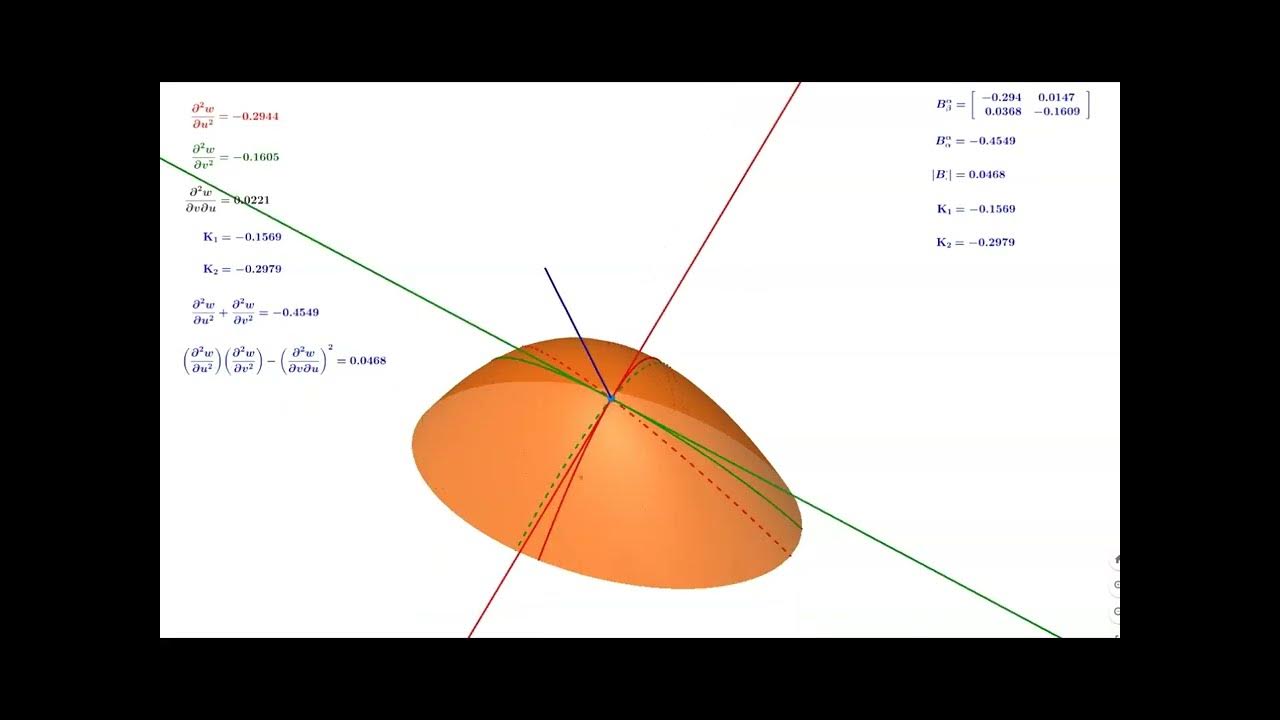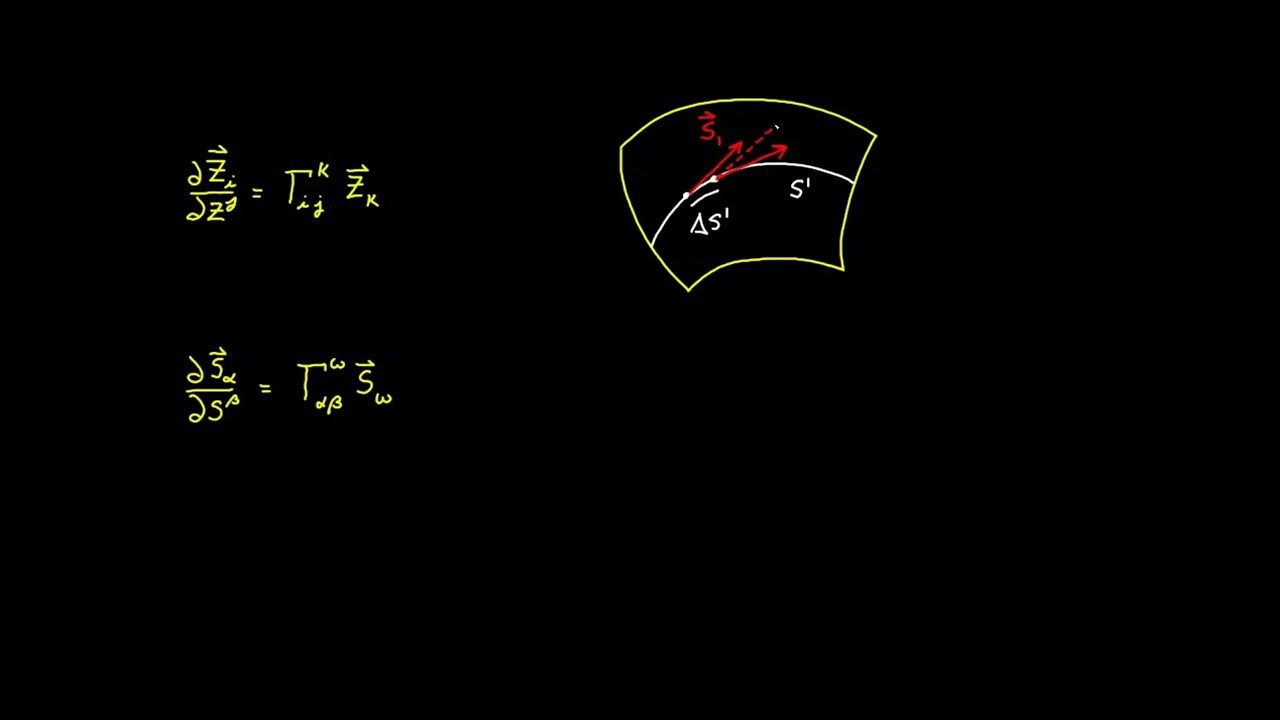Tensor Calculus For Physics Majors 005| Diagonalizing 2nd Rank Tensors
TLDRThis educational video delves into the intricacies of tensor calculus, specifically focusing on the transformation and diagonalization of second-rank tensors, using the inertia tensor as a practical example. It explains how a symmetric real tensor can be diagonalized by aligning with its principal axes, simplifying the representation and understanding of physical phenomena. The video also explores the mathematical process of finding eigenvalues and eigenvectors, and demonstrates how these concepts can be applied to achieve a diagonal matrix representation, which is particularly useful in physics for analyzing angular momentum and rotation dynamics.
Takeaways
- 📚 The video discusses the concept of tensor calculus, focusing on the diagonalization of symmetric real second-rank tensors, specifically using the inertia tensor as an example.
- 🔍 It explains that a diagonal matrix representation of a tensor can be more 'nice to work with', meaning it has zero off-diagonal components, and that a symmetric real second-rank tensor can always be diagonalized.
- 🌀 The script introduces angular momentum and its relationship with the inertia tensor, highlighting how the direction of angular momentum can differ from angular velocity if the system is not well-balanced.
- 🎯 The video demonstrates how to project tensors onto an XYZ coordinate system using de Broglie notation and how to expand this representation for further analysis.
- 📉 The inertia tensor's off-diagonal components (I_XZ and I_YZ) are shown to be zero due to the cylindrical symmetry of the object (tires), simplifying the tensor to a diagonal form.
- 🔧 The process of diagonalizing a non-diagonal inertia tensor is illustrated by changing the basis to one that aligns with the principal axes of rotation, resulting in a diagonal matrix.
- 📏 The eigenvectors of the tensor are identified as the natural basis for representing the tensor in a diagonalized form, with the eigenvalues corresponding to the elements of the diagonal matrix.
- 🧩 The video provides a step-by-step guide to finding the eigenvalues and eigenvectors of a given tensor, using determinants and matrix operations.
- 📝 An example is worked through, showing the algebraic process of diagonalizing a specific inertia tensor and obtaining real, positive eigenvalues, which is expected for physical quantities like inertia.
- 🔄 The transformation properties of tensors are revisited, explaining how tensors transform under a change of basis, and how this relates to the outer product of vectors.
- 🚀 The script concludes with a preview of the next topic, the metric tensor, and invites viewer engagement by suggesting exercises from a book for future videos.
Q & A
What is the main topic of the video?
-The main topic of the video is the diagonalization of the inertia tensor in the context of tensor calculus for physics majors.
Why is it useful to diagonalize a tensor?
-Diagonalizing a tensor is useful because it simplifies the matrix representation, making calculations and analysis more straightforward, especially when the tensor has a symmetric nature.
What does the video mean by a 'nice to work with' matrix representation?
-A 'nice to work with' matrix representation refers to a diagonal matrix, where most of the off-diagonal components are zero, simplifying the calculations.
What is an inertia tensor and why is it important in physics?
-The inertia tensor is a measure of an object's resistance to rotational motion about its center of mass. It is important in physics for understanding and calculating angular momentum and rotational dynamics.
Why might the angular momentum not point in the same direction as the angular velocity?
-The angular momentum might not point in the same direction as the angular velocity if the object, such as a tire, is not well balanced, leading to off-diagonal components in the inertia tensor.
What is the significance of choosing the right basis for a tensor?
-Choosing the right basis can simplify the tensor's matrix representation, potentially diagonalizing it, which makes the tensor easier to work with and understand.
How does the video demonstrate the diagonalization of the inertia tensor?
-The video demonstrates the diagonalization of the inertia tensor by considering the geometry of the object, using symmetry arguments, and performing integral calculations to show that off-diagonal elements can be zero.
What is the role of eigenvectors in diagonalizing a tensor?
-Eigenvectors play a crucial role in diagonalizing a tensor because they form a new basis in which the tensor's matrix representation is diagonal, with the eigenvalues on the diagonal.
How does the video approach finding the eigenvectors of a tensor?
-The video approaches finding the eigenvectors by setting up the characteristic equation derived from the determinant of the tensor minus lambda times the identity matrix, and solving for the eigenvalues and eigenvectors.
What is the physical interpretation of diagonalizing the inertia tensor?
-Diagonalizing the inertia tensor physically means that the angular momentum will point in the same direction as the angular velocity when the object rotates about the principal axes, indicating a balanced and symmetric system.
What is the next topic the video series will cover after discussing the inertia tensor?
-The next topic the video series will cover is the metric tensor, which is an important concept in differential geometry and general relativity.
How does the video connect the transformation of two-index tensors with the outer product of vectors?
-The video connects the transformation of two-index tensors with the outer product of vectors by demonstrating that the product of two vector components in a transformed frame is equivalent to the transformation rule of a two-index tensor.
Outlines
📚 Tensor Calculus for Physics Majors: Diagonalizing Inertia Tensors
This paragraph introduces the concept of tensor calculus, specifically focusing on the diagonalization of symmetric real second-rank tensors, using the inertia tensor as an example. It explains the importance of choosing the right basis for tensor representation and how a diagonal matrix representation can simplify calculations. The angular momentum and its relationship with the inertia tensor and angular velocity are discussed, highlighting the impact of tire balance on angular momentum direction. The summary also touches on the process of expanding tensor representation and the significance of off-diagonal components in determining the tensor's nature.
🔍 Exploiting Symmetry in Tensor Calculations: The Case of Tire Inertia
The second paragraph delves into the geometric considerations of the inertia tensor for tires, which are modeled as cylinders with cylindrical symmetry. It discusses how the symmetry can be used to simplify the calculation of off-diagonal components of the inertia tensor, leading to the conclusion that these components are zero due to the integration over angles. The paragraph also addresses the simplification of the inertia tensor when considering the principal axis of rotation, resulting in a diagonal matrix with non-zero elements only along the diagonal, signifying a successful diagonalization of the tensor.
🔧 Diagonalizing Non-Diagonal Inertia Tensors Through Eigenvectors
This paragraph explores the process of diagonalizing an inertia tensor that is not initially diagonal. It introduces the concept of changing the basis to one where the basis vectors are the eigenvectors of the tensor itself. The eigenvalues and eigenvectors are used to transform the tensor into a diagonal form, where the off-diagonal elements are zero. The process involves setting up and solving the characteristic equation to find the eigenvalues, and then using these to find the corresponding eigenvectors. The importance of orthonormality in ensuring a unique solution for the eigenvectors is also highlighted.
📘 Solving for Eigenvalues and Eigenvectors of the Inertia Tensor
The fourth paragraph continues the discussion on diagonalizing the inertia tensor by providing a step-by-step guide on solving for its eigenvalues and eigenvectors. It presents a specific inertia tensor matrix and walks through the calculation of the determinant to find the characteristic equation. The eigenvalues are solved, and the process of finding the corresponding eigenvectors is initiated, emphasizing the algebraic manipulation required to achieve a set of orthonormal eigenvectors.
📐 Orthonormalization of Eigenvectors and Completing the Tensor Diagonalization
The focus of this paragraph is on the completion of the eigenvector calculation and their orthonormalization. It describes the process of solving the system of equations derived from the eigenvalue problem for a given tensor, and the subsequent steps to ensure the eigenvectors form an orthonormal set. The paragraph illustrates the algebraic techniques used to find the components of the eigenvectors and emphasizes the physical significance of these vectors in the context of the inertia tensor.
🧩 Constructing the Eigenvector Matrix and Transforming the Inertia Tensor
This paragraph discusses the construction of the eigenvector matrix and its role in transforming the inertia tensor into its diagonal form. It explains the matrix multiplication process involving the eigenvector matrix and its transpose, and how this operation results in a diagonal inertia tensor. The physical interpretation of the diagonalized tensor is also provided, linking it to the angular momentum and the principal axes of rotation.
🔄 Tensor Transformations and the Outer Product of Vectors
The final paragraph shifts the focus to the transformation of tensors and introduces an alternative perspective on tensor transformations by relating them to the outer product of vectors. It illustrates how the product of vector components can be used to define a tensor, drawing a connection to the inertia tensor's definition. The paragraph concludes with a preview of the upcoming topic, the metric tensor, and invites viewer engagement for future video content.
Mindmap
Keywords
💡Tensor Calculus
💡Diagonal Matrix
💡Inertia Tensor
💡Angular Momentum
💡Eigenvectors and Eigenvalues
💡Cylindrical Symmetry
💡Kronecker Delta
💡Orthonormal Basis
💡Characteristic Equation
💡Tensor Transformation
Highlights
Introduction to the concept of tensor calculus for physics majors, focusing on the transformation of second-rank tensors.
Explanation of the convenience of projecting a second-rank tensor onto a coordinate system and the challenges of dealing with non-diagonal matrix representations.
Discussion on the diagonalization of symmetric real second-rank tensors and the conditions that allow for it.
The inertia tensor is used as an example to demonstrate the process of diagonalization.
Angular momentum and its relationship with the inertia tensor in an XYZ basis using de Brock notation.
The impact of tire balance on angular momentum direction and the physical implications of non-aligned angular momentum and angular velocity.
Expansion of the representation of angular momentum components and the conditions for their simplification.
The exploitation of cylindrical symmetry in calculating the inertia tensor components for tires.
Derivation of the inertia tensor in cylindrical coordinates and the simplification due to integral properties.
The geometric reasoning behind the cancellation of off-diagonal components in the inertia tensor.
Introduction of a method to diagonalize a non-diagonal inertia tensor by changing the basis to the tensor's eigenvectors.
The process of finding eigenvectors by solving the characteristic equation derived from the determinant of the tensor minus lambda times the identity matrix.
An example of diagonalizing a given inertia tensor with non-diagonal elements by calculating its eigenvalues and eigenvectors.
The physical interpretation of diagonalized tensors, particularly in relation to the alignment of angular momentum with angular velocity.
The transformation of tensors through the outer product of vectors and its significance in tensor calculus.
A preview of the upcoming discussion on the metric tensor and its importance in physics.
Transcripts
Browse More Related Video

Tensor Calculus For Physics Majors 004| Transformation of Two Index Tensors

Tensors as a Sum of Symmetric and Antisymmetric Tensors

Tensor Operations: Contractions, Inner Products, Outer Products

Video 80 - Curvature Tensor - Part 2

Tensors for Beginners 14: Tensors are general vector/covector combinations

Video 68 - Christoffel Symbol for Surfaces - Part 1
5.0 / 5 (0 votes)
Thanks for rating: